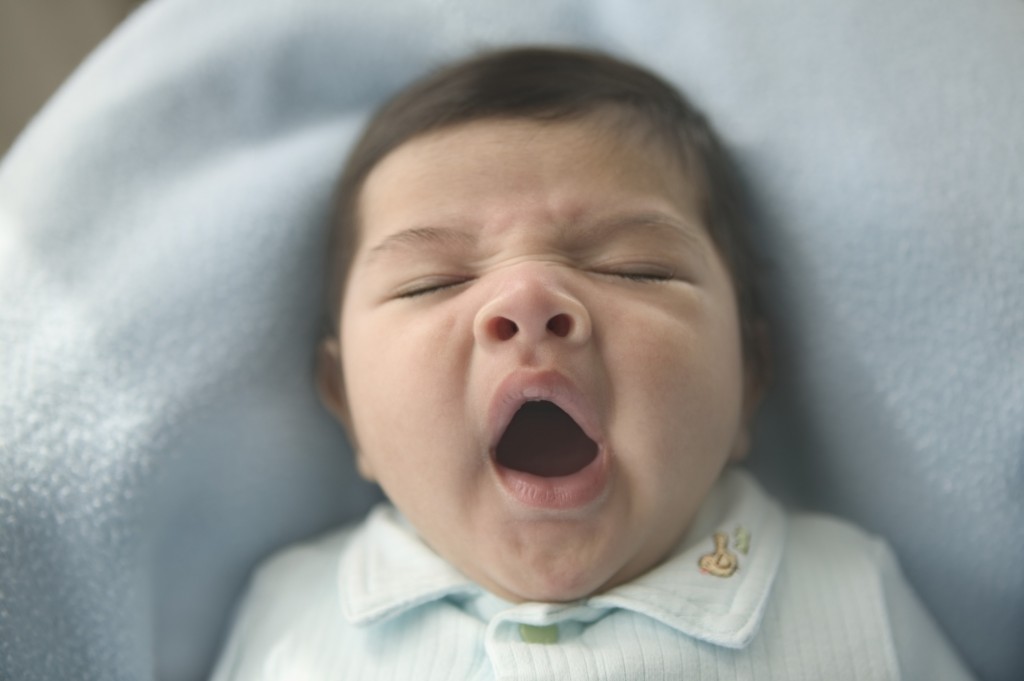
I’m a new mom of a 4-month-old boy, and it’s giving me a new perspective on my work. Some new parents might be surprised to know that we are both getting pretty good sleep these days. I have researched child sleep, health and development for years, and now with my baby I am putting what I’ve learned into practice, especially when it comes to helping my son develop healthy sleep skills.
I study sleep issues in infants all the way to adolescents. As my son grows, I will help him as a preschooler through night terrors, change bedtime routines to meet the needs of an elementary school boy, and deal with the growing independence of the teenage years and the bedtime struggles that smartphones and tablets can bring.
How much does sleep affect things such as mood and school performance?
I’ve long been fascinated with how sleep, screen time, physical activity, mood and behavior are all inter-related. It’s like a domino setup where knocking one thing down affects everything else. Improving sleep seems to have positive effects on injury risks, behavior problems, school performance and obesity risks. As a scientist, I have so many questions about how all these relationships work and how we can zero in on changes real families can make to improve sleep.
What is screen time doing to our kids’ sleep?
We know that exposing our eyes to the light from screens in the hours before bed can decrease our levels of a hormone called melatonin. This hormone helps us fall asleep and stay asleep so that we can go through the various cycles of sleep and reach the deep, restorative levels. Changes in melatonin levels not only make it harder to fall asleep at bedtime, but can hurt a body’s ability to take care of business that happens mostly during deep sleep, like cementing what we learned that day into long-term memory and releasing growth hormone.
But researchers have barely scratched the surface in understanding how to take what we are learning about sleep science and make it work for families. For example, does it make a difference in sleep if a teen is staying up late using a computer for homework versus playing video games? Does it help if we dim the light on the screen, or have the teen wear amber glasses to block out the wakeful blue wavelengths of light that most affect melatonin? While more research is needed to try to find answers to these complicated questions, there are several things parents can do now to help their families get a good night sleep.

Tips for Getting a Good Night’s Sleep
- Turn off all screens at least two hours before bedtime if your child has trouble falling asleep. If there are no problems, turn them off 1 hour before bedtime.
- No caffeine (including energy drinks) after 2:00 p.m.
- Have a bedtime routine. Do the same things each night in the 10 to 15 minutes before bed. A routine is helpful at all ages, not just with young children.
- Some people find it helpful to read, do gentle yoga, draw or set out things for the next day as part of their routine.
- Limit light in the room. If your child needs a nightlight, choose one that uses red, orange or yellow light, and avoid blue and white. Also, be aware that alarm clocks often give off light. Choose one with a digital readout that is red or yellow, or an alarm clock where the readout can be dimmed or turned off. A low-tech solution? Put tape over it or turn it to face a wall.
- Suggest that your local high school consider later start times so that students can get enough sleep.
Can everyone improve their sleep?
Yes! As a new mom, I am spending more time with other new parents, and one thing I remind people is that there are no “bad sleepers” — learning to sleep well is a developmental skill just like walking or talking, and while some children get there easily on their own, some need a little more help.
My research focuses on developing better ways to help families improve their child’s sleep. Unlike what some of the books out there promise, there really doesn’t seem to be a “one size fits all” answer — so we work on sleep interventions that prioritize finding ways to improve sleep that will work with real families who are usually juggling so many different needs.
One practical way to improve sleep can involve taking a “harm reduction” approach — so instead of asking families to cut out screen time altogether, we work with them on having a “screen time blackout” during the hour or two before bed, or on changing the content to something slower paced and less violent.
How do sleep scientists gather data?
As a scientist, I love when kids see the actual science of what we are doing. Even preschoolers in our SHIP study get excited about wearing a wristband that tracks their sleep, physical activity and light exposure. In some of our studies we share this data with families, and it is great when parents and teens can see the same patterns that we see — for example, if kids sleep better on days when they were active outdoors in the morning. In our CRAFT study, we collect saliva to measure melatonin levels, and kids love getting to see their spit go into the centrifuge, and how we measure it to track how much we collect at each point.
What can parents do at home?
Often families find that it helps to do their own science experiments about sleep. Some might make a change in bedtime or screen time for two weeks, and keep track of sleep and how they feel so they can see whether the change is working for them. This is especially helpful with older kids and teens, who can be much more willing to problem-solve and make changes when they can see for themselves the impact the changes are having on sleep and outcomes they care about — like sports performance and getting along better with friends at school.
Parents spend a lot of time planning their children’s waking hours — sports, school, friends. With all that we are learning about how much sleep impacts growth and well-being, perhaps parents will devote time to considering how they can improve their children’s sleep, too.
If you are interested in helping us learn more about sleep, I am enrolling participants in two studies:
- The SHIP study for ages 2.5 through 5 might be a good fit if your child has sleep problems like resisting bedtime, having a hard time falling asleep, waking up during the night, not getting enough sleep, or feeling tired during the day. For more information go to www.shipstudy.org and complete the online survey or call 206-987-SHIP.
- The CRAFT study for ages 5 through 8 might be a good fit if your child has sleep problems like resisting bedtime, waking up during the night, not getting enough sleep, feeling tired during the day or having a hard time falling asleep. We’d like to enroll kids both with ADHD that is not being treated with medication and/or prenatal alcohol exposure. For more information email [email protected] or call (206) 884-1195 for more information.
Resources
- Dr. Michelle Garrison at Seattle Children’s Research Institute
- Dr. Garrison’s lab at Seattle Children’s Research Institute
- Video: Dr. Garrison, Faces of Research

